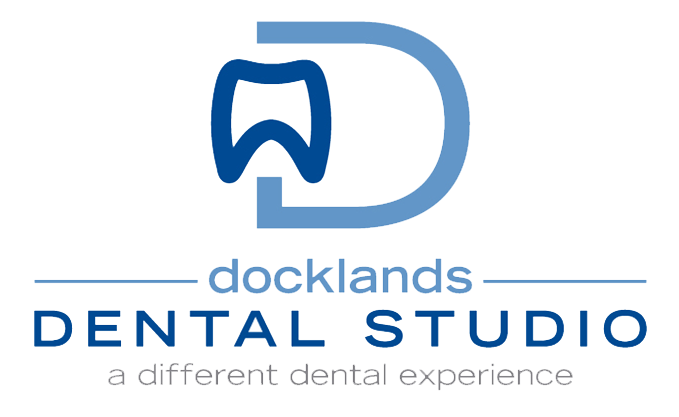If you’ve lost a tooth, you’ve probably heard your dentist suggest a dental implant to replace it. There are other treatments for tooth loss, of course. Before implants became widespread and popular, a single lost tooth would be always replaced with a dental bridge. Multiple teeth might be replaced with a longer bridge or partial denture. These treatments are still in use, but dentists love to suggest implants because they are a much better option. Not only do implants feel and function more like natural teeth, but they also help you preserve your oral health better over time.

Dental Bridge vs. Dental Implant and Crown
If you’ve lost a single tooth, you have the option of replacing it with a bridge or a dental implant and crown. A dental bridge is a single construction that looks like a row of three prosthetic teeth; the teeth on the sides of the bridge are actually crowns that cover your natural teeth adjacent to the gap, and the tooth in the middle replaces the one you lost. Bridges do a fine job of stabilizing your natural teeth to prevent changes to your tooth alignment and bite. They also give you a replacement tooth to make your smile appear whole again. However, bridges do have their limitations.
A major concern with bridges is that they are dependent on the health of your crowned teeth. If just one of those teeth fails, the whole bridge will fail. For example, if later in life you develop gum disease that causes a cavity below the gingival surface (on a crowned tooth), the bridge will need to come off if the tooth can be repaired. If the tooth cannot be saved, the bridge cannot be replaced. No more bridge; two missing teeth instead of bridge.
Single dental implants are far preferable to bridges because they are not dependent on nearby teeth for support. The implant acts as a prosthetic tooth root and the attached crown replaced the enamel. You do not have to alter your nearby teeth to get an implant; they are free-standing replacement teeth. They are so lifelike that patients often can’t tell the difference between their new tooth and the tooth they lost. Functionally, they are identical.
Implant Dentures vs. Traditional Dentures
For patients who have lost multiple teeth, implant dentures and partial dentures have a massive advantage over traditional dentures and partials: stability. Old-fashioned dentures are not attached to the jaw the way natural teeth are. They use only the power of suction and adhesives to stay in place. This means that when you first get dentures, you have to learn a brand-new way to eat and speak in order to make sure your dentures don’t fall out of place. This can take several weeks and can be a jarring experience. Even when you do learn how to eat in dentures, you will not be able to eat the same diet you are used to, since hard and chewy foods may dislodge the denture plate and lead to an embarrassing experience at the table.
Implant-based dentures are securely attached to the jaw, so they function more like your natural teeth. Most implant dentures are removable, as this makes for easier nightly cleaning. However, they stay firmly attached to the implants and can even stand up to biting into an apple or corn on the cob. With implant dentures, patients have more dining confidence and full access to a healthy diet.
Another problem with traditional dentures is that they can irritate the gum tissue. Since all biting and chewing pressure has to come from the gums, this can lead to soreness. Since implant dentures are securely connected to implants that have fused with the jaw bones, there is no rubbing against the gums, and no pain.
Dental Implants Prevent Bone Loss
If you’ve ever seen a long-time denture wearer, you’ve probably noticed how their chin and jaw are not as full as the average person’s. This happens as the result of a process called jawbone resorption. Our bodies are constantly building up and breaking down bone tissue. It’s why women may develop osteoporosis as they age, and it’s also what makes bones able to heal themselves after they suffer a fracture. Bones seem hard and “final,” but they are living tissues that are constantly changing.
When tooth roots are lost from the jaw, this sends a message to the body that jawbone density is no longer needed to support the teeth, and initiates jawbone resorption. The minerals that would be used to preserve a full jaw bone are sent elsewhere in the body instead. This process is gradual, and it may take a decade before you notice any visible effects of bone loss, but it is inevitable. It also makes traditional dentures a constant game of relining dentures to keep a good fit. If the dimensions of your mouth are changing as the result of bone loss, your dentures need to change too, to make sure they fit right.
One of the best things about dental implants is that they prevent jawbone resorption. Implants mimic natural tooth roots so well that they fool the body into preserving the jaw bone. Implants stimulate the dental ligaments and trigger the body to continue supporting healthy facial bone mass. Implant patients love being able to count on their facial bones staying the same as they age, and never having to worry about changes to their bone structure and appearance.
Why Dental Implants Cost More
Some cynics or uneducated folk may tell you dentists prefer implants because they cost more—so we can make more money. It is true that implants cost more than traditional prosthetic teeth, but they are also a fully functional replacement for a vital body part. How much would you expect to pay for a hip replacement? Or a knee replacement? The price tag on dental implants is higher because they require a surgical procedure that requires a great deal of skill on the part of the practitioner. Consider the cost of a hip replacement versus the cost of a cane. Which option is going to give you better quality of life? Is it worth a bit more?
Do Dental Implants Really Cost More?
Another thing to consider is that dental implants will usually last a lifetime. They have a 98-99 percent success rate and almost never need to be replaced. As long as you take good care or your implants and oral health, you should have a lifelong replacement for the teeth you lost.
Traditional prosthetic teeth (bridges, dentures) are not as permanent as implants, and need to be replaced every few years. If you add up the cost of a new bridge every 8 years or new dentures every 3 years, the costs over time are much closer to the one-time upfront cost of getting implants.
Contact Docklands Dental Studio to Learn More About Dental Implants
If you or someone close to you has lost teeth, dental implants can give back what you’ve lost! Call Docklands Dental Studio at Call Docklands Dental Studio at 0488-799-487 to learn more.
If you are in Port Melbourne or South Wharf, it’s quite easy to get to our dental practice via the Web Bridge (foot or bike) or Wurundjeri Way (by car).
Also published on Medium.
